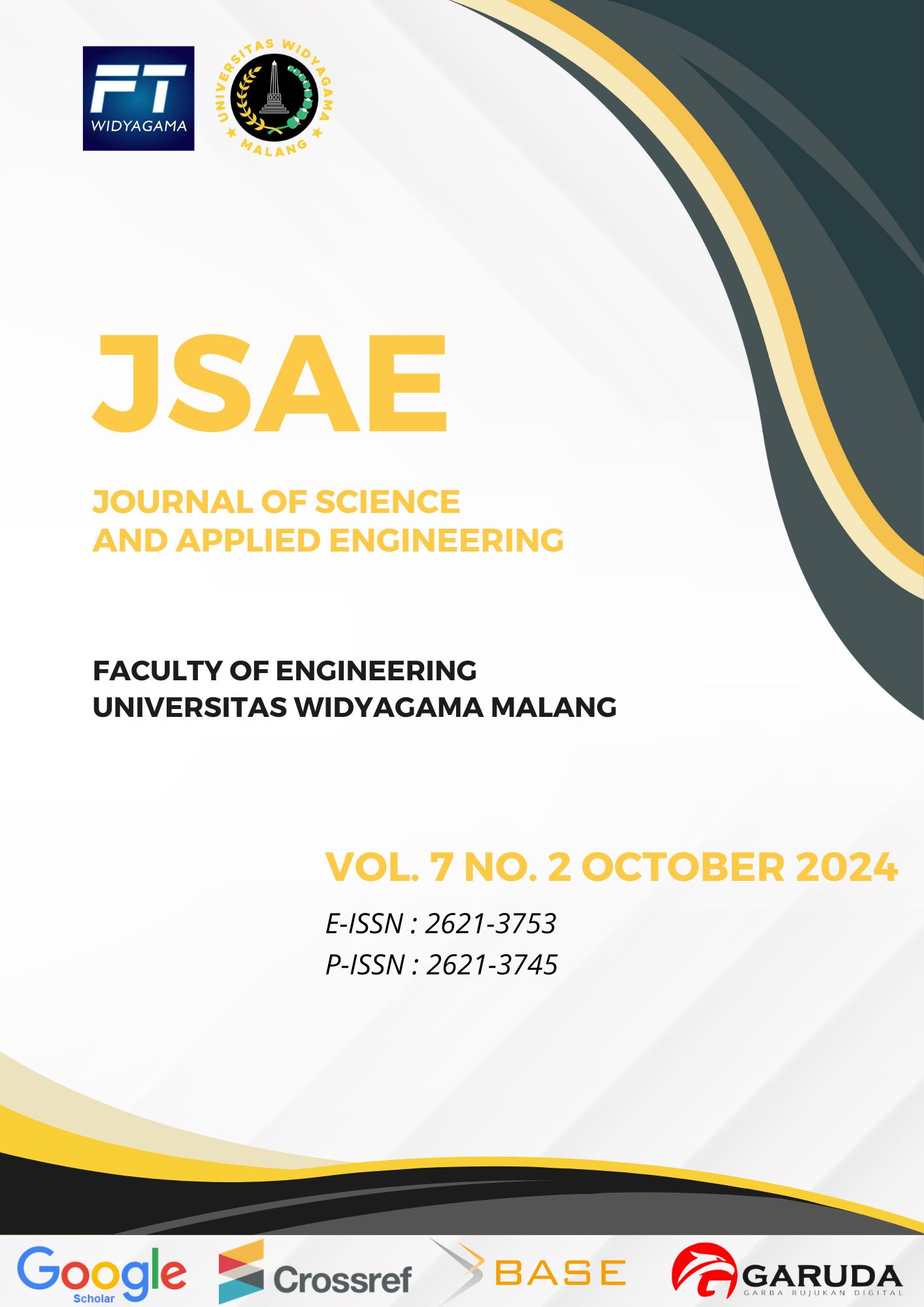ANALYSIS OF GOOGLE MAPS REVIEW SENTIMENT ON BLIMBING MARKET FACILITIES WITH SVM
DOI:
https://doi.org/10.31328/jsae.v7i2.6438Keywords:
Sentiment Analysis, Market, Vector Machine SupportAbstract
Traditional markets play a crucial role in the local economy, especially in developing countries like Indonesia. Although markets and traders have officially developed, the quality of facilities in traditional markets remains a challenge, with various issues affecting visitor comfort and experience. This study proposes a sentiment analysis of public opinions on the facilities of Blimbing Traditional Market using the Support Vector Machine (SVM) method. The aim is to understand the implementation and results of sentiment classification using SVM. The data used is sourced from user reviews on Google Reviews. The analysis process includes data collection, automatic sentiment labeling using TextBlob, and data preprocessing, including case folding, text cleaning, tokenization, stemming, and stopword removal. SVM with various kernels (linear, polynomial, RBF, and sigmoid) was evaluated with train-test data split ratios ranging from 90/10 to 10/90. The results show that the linear kernel achieved an accuracy of 98.07% with an 80/20 ratio, poly 96.15% with a 90/10 ratio, RBF 97.69% with a 90/10 ratio, and sigmoid 98.46% with a 90/10 ratio. Suggestions for future research include exploring more advanced preprocessing techniques and other algorithms such as Random Forest, Naive Bayes, or Neural Networks to improve sentiment analysis performance.References
[1] M. Purnomo, F. Otten, and H. Faust, “Indonesian traditional market flexibility amidst state promoted market competition,” Soc. Sci., vol. 7, no. 11, 2018, doi: 10.3390/socsci7110238.
[2] M. H. Shuman, The Small-Mart Revolution: How Local Businesses Are Beating the Global Competition. San Francisco, California, Amerika Serikat.: Berrett-Koehler Publishers, 2006.
[3] L. G. Palamuleni, “Effect of sanitation facilities, domestic solid waste disposal and hygiene practices on water quality in Malawi’s urban poor areas: a case study of South Lunzu Township in the city of Blantyre,” Phys. Chem. Earth, no. January 2002, pp. 845–850, 2002, doi: 10.1016/S1474-7065(02)00079-7.
[4] W. Fahmi and K. Sutton, “Cairo’s contested garbage: Sustainable solid waste management and the Zabaleen’s right to the city,” Sustainability, vol. 2, no. 6, pp. 1765–1783, 2010, doi: 10.3390/su2061765.
[5] M. Trenz and B. Berger, “Analyzing online customer reviews - An interdisciplinary literature review and research agenda,” in ECIS 2013 - Proceedings of the 21st European Conference on Information Systems, 2013.
[6] J. R. Taylor and S. T. Lovell, “Mapping public and private spaces of urban agriculture in Chicago through the analysis of high-resolution aerial images in Google Earth,” Landsc. Urban Plan., vol. 108, no. 1, pp. 57–70, 2012, doi: 10.1016/j.landurbplan.2012.08.001.
[7] F. Hemmatian and M. Karim Sohrabi, “A survey on classification techniques for opinion mining and sentiment analysis,” Springer, 2017.
[8] K. Ravi and V. Ravi, A survey on opinion mining and sentiment analysis: Tasks, approaches and applications, vol. 89, no. November. 2015. doi: 10.1016/j.knosys.2015.06.015.
[9] A. Gupta, P. Tyagi, T. Choudhury, and M. Shamoon, “Sentiment Analysis Using Support Vector Machine,” Proc. 4th Int. Conf. Contemp. Comput. Informatics, IC3I 2019, pp. 49–53, 2019, doi: 10.1109/IC3I46837.2019.9055645.
[10] M. Ahmad, K. Jawad, M. B. Alvi, and M. Alvi, “Google Maps Data Analysis of Clothing Brands in South Punjab, Pakistan,” EAI Endorsed Trans. Scalable Inf. Syst., vol. 10, no. 3, 2023, doi: 10.4108/eetsis.v10i3.2677.
[11] B. S. Shekhawat, “Sentiment Classification of Current Public Opinion on BREXIT: Naïve Bayes Classifier Model vs Python’s TextBlob Approach,” Natl. Coll. Irel. , 2019.
[12] K. Kucher, C. Paradis, and A. Kerren, “The state of the art in sentiment visualization,” Comput. Graph. Forum, vol. 37, no. 1, pp. 71–96, 2018, doi: 10.1111/cgf.13217.
[13] S. Zhou, Q. Chen, X. Wang, and X. Li, “Hybrid deep belief networks for semi-supervised sentiment classification,” COLING 2014 - 25th Int. Conf. Comput. Linguist. Proc. COLING 2014 Tech. Pap., pp. 1341–1349, 2014.
[14] S. García, S. Ramírez-Gallego, J. Luengo, J. M. Benítez, and F. Herrera, “Big data preprocessing: methods and prospects,” Big Data Anal., vol. 1, no. 1, pp. 1–22, 2016, doi: 10.1186/s41044-016-0014-0.
[15] J. Singh and V. Gupta, A systematic review of text stemming techniques, vol. 48, no. 2. 2017. doi: 10.1007/s10462-016-9498-2.
[16] H. D. Abubakar and M. Umar, “Sentiment Classification: Review of Text Vectorization Methods: Bag of Words, Tf-Idf, Word2vec and Doc2vec,” SLU J. Sci. Technol., vol. 4, no. 1&2, pp. 27–33, 2022, doi: 10.56471/slujst.v4i.266.
[17] R. Zuo and E. J. M. Carranza, “Support vector machine: A tool for mapping mineral prospectivity,” Comput. Geosci., vol. 37, no. 12, pp. 1967–1975, 2011, doi: 10.1016/j.cageo.2010.09.014.
[18] N. Cristianini and B. Schölkopf, “Support vector machines and kernel methods: The new generation of learning machines,” AI Mag., vol. 23, no. 3, pp. 31–41, 2002.
[19] S. Salcedo-Sanz, J. L. Rojo-Álvarez, M. Martínez-Ramón, and G. Camps-Valls, “Support vector machines in engineering: An overview,” Wiley Interdiscip. Rev. Data Min. Knowl. Discov., vol. 4, no. 3, pp. 234–267, 2014, doi: 10.1002/widm.1125.
[20] I. S. Al-Mejibli, J. K. Alwan, and D. H. Abd, “The effect of gamma value on support vector machine performance with different kernels,” Int. J. Electr. Comput. Eng., vol. 10, no. 5, pp. 5497–5506, 2020, doi: 10.11591/IJECE.V10I5.PP5497-5506.




